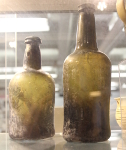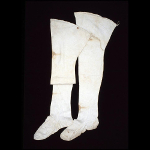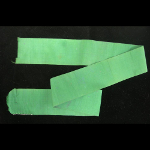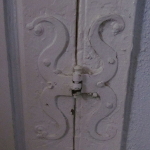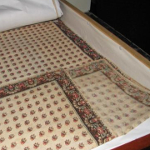Artifact: Violin

Materials: Spruce, maple, ebony
Dimensions: Total L. 33 cm (13 in.)
Date: 1783
Origin: Livorno, Italy
Collection: Metropolitan Museum of Art
License: OASC
Ledger Entry: Violin

Department: Entertainment
Customer: Harry Piper
Ledger Page: 86
Imported From:
Product Description
The violin, or fiddle was the most popular instrument of early America, played by men of all backgrounds from Thomas Jefferson to plantation slaves. Violins were ideal for social gatherings and tavern music because they were small and portable. Although violin sales were limited in the Ramsay store, the related purchase of fiddle strings was more common. Many fiddle strings were made of animal intestine (from animals such as goats, sheep, and cows) wrapped in silk, silver, or copper. Preferred by many musicians for their warm, rich sound, gut strings do not react well to weather fluctuations, perhaps explaining the frequency of fiddle string purchases at Ramsay’s store.
Citation: Ed Crews “Tavern Music” CW Journal Winter 03-04.;
Historical Price: 1 pound, 11 shillings, 6 pence; Modern USD: $353
Product Variations
The databases record only one purchase of a violin sold with a bow and case for one pound eleven shillings and six pence. The databases record fourteen purchases of fiddle strings. These were sold by the knot and ranged from four pence to one shilling three pence. Although The databases record no qualifiers to indicate a difference in quality or material, this is implied by the price differences.
